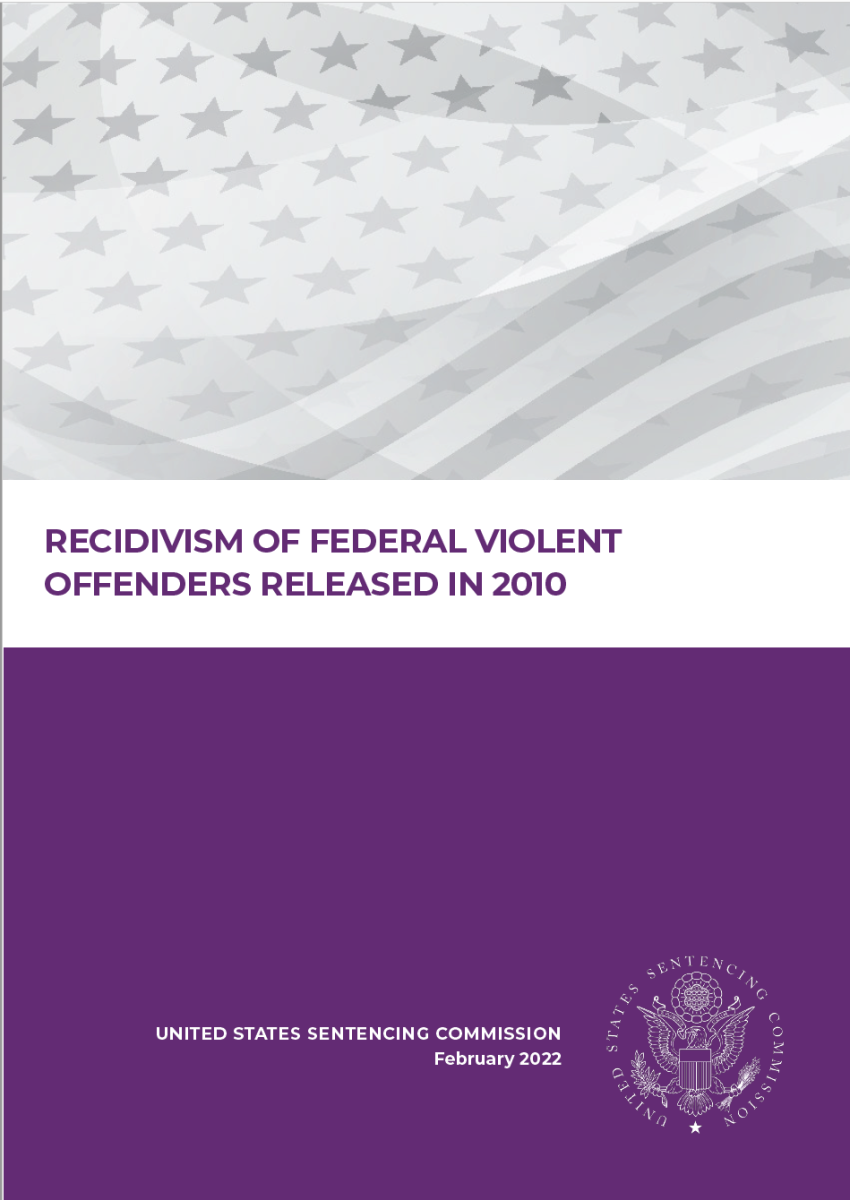Overview

The final study group of 13,883 violent offenders satisfied the following criteria:
- United States citizens
- Re-entered the community during 2010 after discharging their sentence of incarceration or by commencing a term of probation in 2010
- Not reported dead, escaped, or detained
- Have valid FBI numbers that could be located in criminal history repositories (in at least one state, the District of Columbia, or federal records)
Key Findings
-
This study demonstrated substantially greater recidivism among violent federal offenders compared to non-violent federal offenders.
- The recidivism rates of violent and non-violent offenders released in 2005 and 2010 remained unchanged despite two intervening major developments in the federal criminal justice system—the Supreme Court’s decision in Booker and increased use of evidence-based practices in federal supervision.
- This finding is consistent with other Commission reports demonstrating higher recidivism among violent offenders including the 2019 Violence Recidivism Report, the Armed Career Criminal Report, and the Career Offender Report.
- Violent offenders recidivated at a higher rate than non-violent offenders. Over an eight-year follow-up period, nearly two-thirds (63.8%) of violent offenders released in 2010 were rearrested, compared to more than one-third (38.4%) of non-violent offenders.
- Violent offenders recidivated more quickly than non-violent offenders. The median time to rearrest was 16 months for violent offenders and 22 months for non-violent offenders.
-
Among offenders who were rearrested, violent offenders were rearrested for a violent offense at a higher rate than non-violent offenders, 38.9 percent compared to 22.0 percent.
- Assault was the most common type of rearrest for both violent and non-violent offenders, but a larger proportion of violent offenders (24.9%) than non-violent offenders (15.4%) were rearrested for assault.
- Age at release is strongly correlated with recidivism for both violent and non-violent offenders. Rearrest rates decrease steadily with each age group for both groups of offenders. However, violent offenders had higher rearrest rates than non-violent offenders in each age group. Among offenders aged 60 and older, the oldest group of offenders studied, 25.1 percent of violent offenders were rearrested compared to 11.5 percent of non-violent offenders.
- Criminal History Category (CHC) is strongly correlated with recidivism for both violent and non-violent offenders. Rearrest rates increase steadily with each CHC for both groups of offenders. However, violent offenders had higher rearrest rates than non-violent offenders in every CHC.
-
Analyzed separately, violent instant offenders (59.9%) and violent prior offenders (64.8%) were rearrested at a higher rate than non-violent offenders (38.4%).
- Among offenders who were rearrested, offenders with a violent instant offense (45.5%) and offenders with a violent prior offense (37.1%) were arrested for a new violent offense more often than non-violent offenders (22.0%).
- The current recidivism findings for violent and non-violent offenders released in 2010 replicate the Commission’s findings for offenders released in 2005. Nearly two-thirds (63.8%) of violent offenders released in 2010 were rearrested, the same rate for violent offenders released in 2005 (63.8%). More than one-third (38.4%) of non-violent offenders released in 2010 were rearrested, a comparable rate to non-violent offenders released in 2005 (39.8%).

